
|
|
   
Now You're Playing With PORTABLE POWER! As you might have guessed from my lenghty Pokèmon memories, I have a special connection with the Game Boy line of consoles, in particular with the Game Boy Color. Obviously, with mainline and the majority of spinoff games of the first and second generation of collectable monsters getting published for the portable brick, it's no surprise that it quickly rose to the top of my favourites list during childhood; as I grew up and I could access to both more games for the system and more info about its history and peculiarities, this interest grew even further! Nowadays I actively collect Game Boy consoles, cartridges, accessories and documentation and I try to review or at least talk about the backstory of every new addition to my collection on my gaming blog, BlastoiseMonster. But one site is never enough for a big passion, so here's a little shrine- which you can consider an introduction to Game Boys, if you've never come across these pocket marvels!  It Almost Started With Pokèmon It Almost Started With Pokèmon  As mentioned in my Pokèmon shrine, Blue version was one of my first games for the GBC, but not the very first one! When I went to buy the console (I got a Berry GBC on that day!) in order to also acquire the first mainline adventure of Pocket Monsters, my local shop still didn't have that game available. Promising to keep a copy for me on the next restock, the seller convinced me (and my parents' wallet) to get another title in the meanwhile. I don't remember much variety in the available stock (no Mario titles either, for some reason, because otherwise I would've gone straight for that) so I went for the next thing that felt more recognizable to kid me: Disney characters. My first game was Rare's Mickey's Racing Adventure, which actually isn't that bad! Not only the cartridge was enhanced to run only on Game Boy Color consoles (giving out full colour and even more features) but the gameplay was decent as well, mixing a racing Story Mode with simple RPG elements and a couple action puzzles sidegames. I mean, it's a pre-Microsoft acquisition Rare game, the same guys behind Conker's Bad Fur Day! That's gotta be good! However, it's only when Pokèmon Blue arrived at the shop that I really became obsessed with the GB. I remember getting back from school the first day after buying the cartridge and wanting to finish my lunch as soon as possible as I wanted to explore more of Viridian Forest xD Even though I kept getting only new Pokèmon games from then on, these titles were designed to be the ultimate Game Boy games, allowing players to experience their little consoles in all their features; obviously the Link Cable accessory comes to mind, but also Gold and Silver's double compatibility between GB Classic and Color, the use of GBC's infrared port for exchanging gifts in Crystal, the many ways players could use their GB Printers in Pokemon Trading Card Game, Pokemon Pinball's rumble feature! Not to mention how this trend continued in the GBA era with Pocket Monsters inspiring even new technologies such as the E-Reader. In short, while the Game Boy library is undoubtly immense, it's no surprise that many fans of the console are also long term Pokèmon fans: the franchise was made to thrive on the Game Boy and the many titles of that era clearly reflect this affinity. My journey with the little handheld almost started with Pokemon, but the continued passion surely was fueled by them. 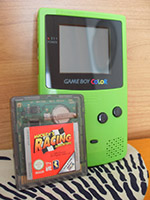 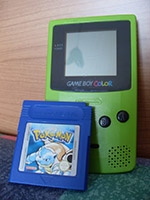  Pocket Family Pocket Family  Game Boys started appearing on shop shelves in 1989; during decades, new models have been produced that expanded its life and kept the line relevant up until the mid 2000! Let's start with the Classic: the OG Game Boy arrived on european shop shelves in the year 1990, just one year before my birth! I could say it's almost my contemporary. While it is incorrect to label it as the first handheld console made by Nintendo (that honour goes to the Game And Watch series), it still brought so many novelties to the gaming panorama of the time. Exactly like the Famicom it ran on cartridges so players just had to buy a swappable piece to try out new games; it was robust and sturdy to survive days outside and being handled by clumsy kids (it even resisted to a trip into space and the Gulf War!); and despite its "minimal" graphics of only greyscale it managed to surpass its Sega and Atari rivals by offering a much bigger autonomy: the Game Gear and the Lynx might have had coloured screens, but they drank battery juice like thirsty camels! In time, more companies decided to develop titles for the Game Boy and this allowed the grey brick to offer many, many more titles than Sega and Atari could ever do. Total shelf killer! Other than tons of games, the Game Boy recieved support by either Nintendo or third party companies to enhance its experience: from external lights to allow players to play in the dark, to speaker boosters to really turn it up to your favourite chiptunes. There were even AC adapters to play while plugged instead of using batteries (though, that would kinda defeat its purpose, doesn't it?) and Nintendo issued record-breaking cameras and printers accessories to have even more fun outside gaming. A whole system to turn the Game Boy into a laptop was in the works yet sadly it never saw the light of day, and now remains as one of the most interesting accessory prototypes. Another peculiarity of the Game Boy was the sheer variety of its appeareance: the most famous batch of Game Boy's alternative colours is from 1995 with the Play It Loud line which featured the brick in Blue, Green, Red, Yellow, Black and the most famous, Transparent! But special editions go even beyond that and many exclusive editions (and colour combinations!) were made in collaborations with store chains, companies, even events or sports team. This variety started a trend with the whole Game Boy line whose subsequent models became more and more colorful, a new exclusive edition popping up for every occasion. If the console itself is so collectible nowadays onpar with its own games, it's thanks to the rainbow of special editions out there in the wild ready to be discovered and documented! Between the Classic model and its real successor the GBC, two other models are surely of note: the Game Boy Pocket and the Game Boy Light. They both often pass unnoticed under the eyes of gamers, which is unfortunate because they brought a lot of new features! The Pocket version is, first and foremost, a smaller Classic Game Boy. The grey brick could use some diet and, undoubtly, the Pocket resolves this by being literally made to fit into a pocket. It came out in 1997 and though the case is smaller its screen is actually bigger, presenting an higher quality LCD screen that employs grey tones along with black and white, making images even clearer! It also requires less power to work with as it asks only for two AAA batteries. Other than that, its different case means it has different-shaped external ports for the Link Cable and the Printer. This may have caused some confusion at the beginning and many wanting to connect the Classic with the Pocket had to use an adapter at first; however, the Pocket's shape of the port actually became the standard for that format and subsequent model followed that shape. The Pocket had so many special editions, too: of course, the most interesting to me is one dedicated to my own country, even if it's just in collaboration with a soccer team! The Fiorentina GBP is a special limited console that comes in a beautiful bundle box. Its silvery case colour might not be much peculiar but grafted to it is a metal and enamel Mario detailing the console number. Now that's unique! Another very beautiful and very rare edition is the Imagineer GBP, which glows in the dark! This hightly sought after edition only counts about 2000 copies made as it was put as a prize for players that would complete the N64 game Multi Racing Championship, take a pictures of their lap times and mail them to the developer company (you guessed it... it was Imagineer). The fastest cars would win the console! Nowadays, this goes for a pretty, pretty penny. But the story and its beauty have no price! The Game Boy Light, instead, never left the shores of Japan in its initial run of 1998 but it soon became a very common after model for collectors. Along with every novelty brought out by the Pocket, the GBLight also came with a retro-illuminated screen that vastly improved its visibility problems, especially at night! As for the japanese exclusivity, once importing games became more common it proved to be no problem at all: none of the Game Boy consoles nor their games are region locked, so they can be played directly without any modifications! Of the Game Boy Light special editions, my personal favourite is the Extreme Green! This version might not glow in the dark, but its semi-transparent acid green case surely shines ultrabright under the sun! Now we get to the year 1998 and Nintendo decides the classic grey brick needs a good makeover... at least until the GBA is ready to roll out! The poor Game Boy Color was originally conceived as simply yet another updated version of the GBClassic, much like the Pocket and Light; instead it instantly became an icon of this handheld line, becoming equally popular as its non-coloured ancestor! Thanks to its 8-bit colour palette it can be considered as a literal portable NES; not to mention its lighter frame able to run games for much longer using only two AA batteries made it a fan favourite for so many. Even the developers liked this system, benefitting from the much more powerful hardware coupled with waaay roomier cartridges (8MB of space instead of just 32KB? Sign me up!) that allower for longer adventures, more detailed graphics and punchier music. It's in its name, the Game Boy Color was born to have a thousand variations and limited editions. Already its first run came out in five colours: Berry, Teal, Kiwi, Grape and Dandelion (did you know? These mentioned editions are shown in the colours of the "COLOR" name in the logo!) to which came along also Neotones Ice, the first "limited" edition. I've already talked estensively about the many, many Game Boy Color special editions on my blog, but I will repeat myself to underline how we can clearly see from these editions that Pokemon was the main franchise that fueled the Game Boy's rise to pop culture icon: look at how many variations are dedicated to Pikachu, the starters of Kanto and Johto, and so many other fan favourites such as Togepi and Jigglypuff! My personal favourite (non-Pokemon related!) is the very classy and delicate Sakura Taisen, while I can't help but absolutely love the Pikachu extravaganza of the very, very rare edition released for the 250th anniversary of the CoroCoro magazine. The Game Boy Color lived a full life of innovative games and accessories until its discontinuation in 2003. A lot of games started getting printed on black cartridges instead of the usual grey, indicating that such titles were compatible with the previous models but would feature enhanced graphics on the Color; furthermore, its exclusive titles got released in special transparent cartridges that allowed us to take a peek at the board without opening its shell... oh, transparent plastics were the future! As for add-ons, we cannot forget the very weird cellphone adapter released only in Japan that allowed players to connect their consoles to a net of online players before the Internet would become a daily commodity. Sadly, America wasn't yet so great on cellphones so we pitiful europeans couldn't have the occasion to play with such toy, neither. Dang you! In the year 2001 the Game Boy Advance hit the shelves showing a very first big, big shake up in the GB lineup: the GBA had first and foremost a completely different setup, with its widescreen and buttons at the side instead of the bottom, developing itself horizontally and almost mimicking its (at this point defunct) Game Gear and Lynx rivals. Not only that, but this time it wasn't just a simple update of the Game Boy Color hardware: it literally doubled its power by boasting 16-bit graphics. If the GBC was a poertable NES, then the GBA would be an actual SNES in your pocket. Indeed it was! The games looked amazing... if you were playing on the surface of the sun! One major downside of the GBA was its way darker screen that didn't allow for much visibility. Apart from that, we all loved the GBA: it could still play Classic and Color cartridges so gamers could still enjoy their whole library (furthermore, the GBA had the option to render those games in widescreen!) and the addition of the shoulder buttons allowed for more genres to be successfully ported on the console. Many fighter titles started appearing... that weren't total shit! The Cable Link port changed its shape once again, which sadly meant that GBAs couldn't be linked with its previous versions; however, this meant Nintendo could go crazy once again with accessories and decided to link the horizontal handheld with wireless technology instead of cables! However, the most honorable mention definitely goes to the E-Reader which the great N pushed in so many ways. Once again, the Pokèmon franchise gets employed to show the best of Nintendo's handhelds as several trading card expansions like Expedition, Aquapolis and Skyridge came with a special design and sidebars that could be scanned with the E-Reader for extra goodies ot add on one's own copy of Ruby and Sapphire or sometimes, even whole extra minigames! Unrelated, but I also do find the rounded and crowded layout design of these cards to be the best one of the whole franchise! GBA's most beautiful special editions are once again dedicated to Pokèmon and I cannot forget to mention the one produced to celebrate the franchise's fourth movie, featuring Celebi silhouettes on the screen border coupled with a satinated green case. There's also a Suicune themed one, but sadly it only features Pikachu and Pichu silhouettes. The poor aqua doggo didn't get enough justice!  Best VS Favourite Best VS Favourite  Classic GBA's screen was a bit too dark to really appreciate all its qualities, though: the battery door was also one of the most fragile of all consoles so far and broke incredibly easily! On top of it all, devices with batteries were starting to become outdated while most of electric home appliances now sported rechargable lithium batteries. It took two whole years, but finally the GBA SP showed up on shelves in 2003 and changed once again the Game Boy family's house rules. Buttons went back under the screen but this time the whole case became a clamshell, copying the trend of everyone's cellphone and giving more protection to the screen and controls. Speaking of the screen, what a beauty! Finally Nintendo copied one of the best features of the old Game Boy Light and made the GBA SP screen retro-illuminated, with a button to even regulate the light's intensity. Retrocompatibility was still there and, just like clamshell phones, even this Game Boy came with its own rechargeable lithium battery! Now gamers didn't had to worry about travelling with a whole bag of batteries by their side. XD The SP was beautiful and resolved many of the issues the GBA initially had, allowing gamers to really enjoy their new titles. Nintendo knew that and pushed the little device as much as possible by releasing so many special editions. One of the most common ones is the Tribal, that sports a silver case with spiky tattoos both outside and inside the clamshell. Another personally important one was the Pink edition, sporting a pearlescent pink clamshell, which was the one I purchased way back when the SP got released! There were of course also many beautiful Pokèmon themed special editions, but I think the spotlight this time goes to the NES and Famicom special editions, modeled exactly like the old consoles! Beautiful! One final update to the GBA line ended up being the Game Boy Micro that came out in 2005. As the name implies, the Micro's main feature was that is was SMALL... but the highly illuminated screen and tightest controls ever made this tiny device popular among many. It also went back to an horizontal layout, allowing players who preferred such button disposition to also enjoy retro-illuminated gaming. Unfortunately, this time Nintendo couldn't do much about retrocompatibility and the Micro could only play GBA games. However they pushed personalization to the max! The Micro has no real special edition because its front case can be taken apart and reassembled by fitting in several personalized masks, even handmade by players! Faceplates still get produced today and are one of the reason the Micro is still remembered by many, especially among creatives. Both the GBA SP and the Micro are considered to be the best consoles of the Game Boy lineup; I tend to agree especially with the SP (since I never got to experience the Micro personally) and it is true that even now I like to play plenty of my collection on it rather than the Game Boy Color; easier visibility and rechargeable battery really do make the gaming experience more enjoyable. With that said, there's no doubt that I still consider the Color to be my favourite among Game Boys: there's something about that recognizable shape and vividly coloured plastic that can't be replicated anywhere else. While the SP reminds me most about my teen years, the Color screams childhood to me and that's what I mostly revisit when playing my collection library. 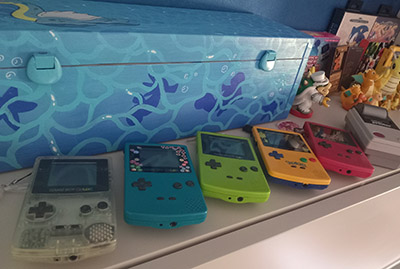  Until DS Makes Us Part Until DS Makes Us Part  It was early 2004 when I was browsing my then newly purchased issue of Pokèmon World and saw the announcement of a new portable console among its pages. I vividly remember a whole paragraph boasting the graphic abilities of the Pikachu demo, showing 3D graphics and a fully interactive touchscreen! I was stoked, though little did I know that the new console was about to simply be named Nintendo DS, putting an end to the Game Boy line for good. From the second half of the 2000s and onward, the DS family totally substituted the Game Boy as the spotlight handheld device of house Nintendo; the massive popularity of its touchscreen and fully wireless communication, along with the advantage of being very easy to develop games for, made so that companies quickly stopped producing titles for the GBA to fully jump onto the DS instead. They were right! The DS was a beatiful machine, versatile and sturdy, its Lite version sporting an even more beautiful case in many captivating colours; and even though its library was littered with shovelware, I attribute to this device my love for the Ace Attorney and Taiko No Tatsujin franchises. At the beginning, stupid teen me was a bit disgruntled of seeing the DS steamrolling the Game Boy so much. The new devices couldn't play my Pokèmon Crystal anymore! However, my further researches enabled by my passion for handheld gaming made me discover how much the DS actually owed from the old Game Boys! The original touchscreen console was conceived after an experiment Nintendo had for the Game Boy Color, wanting to implement touch controls on the coloured portable NES with an add-on accessory since 1998! Even the 3DS, who came out so many years after, had its roots in the Game Boy family with the GBA SP this time being its true ancestor, as lenticular graphics and augmented reality were features initially attribuited to it. As I'm writing this page, the Switch fills both home and portable console roles for the Nintendo house: the distinction between SNES and Game Boy, N64 and Game Boy Color, GameCube and GBA, Wii and DS (but also their interesting ways of connecting one another!) are long gone. Modern gaming is surely much more advanced and streamlined, but sadly has lost most of the gimmicky nature that made it an interesting discovery; we used to play with the consoles themselves and their accessories, not just with the titles available for such systems. I believe the toy aspect of old devices is another one of the main reasons why retrogame collecting has become more and more popular!  The King Of Creative Collecting The King Of Creative Collecting  Wether you prefer the Classic, Color or Advance, all Game Boy consoles are known to be tiny, colorful and just beautiful to handle and look at. Cartridges can be held like a deck of cards in your hand and the devices make up for a wonderful spectacle if all lined up on home shelves. They're just very satisfying tactile toys! Collectors are aware of this and the ones who specialize in Game Boys also love to tinker with their appeareance: among all consoles, I think the Nintendo handhelds are highly preferred when gamers want to experiment with paint, sprays and soldering irons. Personally, I prefer to collect original versions (afterall, there's so many!) but I can't help ogling at all the creative new shells the community comes up with... and as an artist myself I don't resist the temptation of adding a little personalization to at least one of my Game Boys. 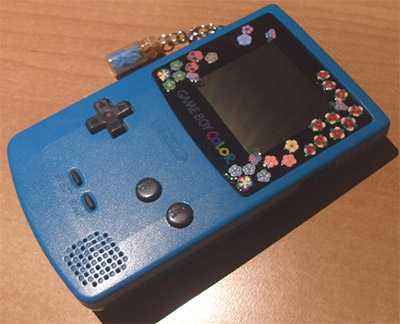 The Internet is chock full of custom examples, be them hand painted or even more professionally printed on brand new shells. Anything goes and you can see Game Boys sporting an array of beautiful stickers or even rhinestone gems encased to their plastic cases. If collectors get ahold of mold to create their own plastic shells, rest assured you can come across some breathtaking specimens made of shimy transparent epoxy and starry glitter mixes. Unsurprisingly, Pokèmon still play a major role here and the custom shells dedicated to favourite monsters are plenty. 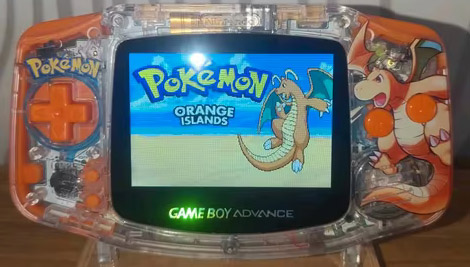 Customization usually doesn't stop at cosmetics and many tinkerers have also made good use of their soldering irons to make their Game Boy quality life much higher. Along with the usual restoration and board cleaning activities, the guts of a vintage Nintendo handheld are easy target for LED enhancements, new buttons, speakers, lens and screens- the last ones especially, there's many third companies focused on selling "repair pieces" for Game Boys that essentially bring them to new life! 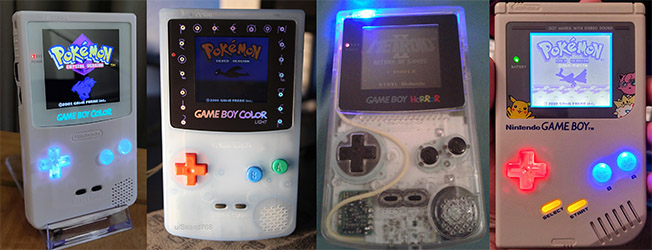 Maybe the most extreme piece of customization is the Game Boy Macro, which I consider to be half recycling of destroyed consoles and half... weird sacrifice: these glorified Game Boy Advance are "made" (or better said, obtained) from old Nintendo DSs whose upper screen gets completely ripped away! It's oddly symbolic to see the original GB killer getting turned into a Game Boy itself! Either way, it can't play neither classic nor color cartridges so it's a bit of a disappointment from me. But big kudos for the idea! xD 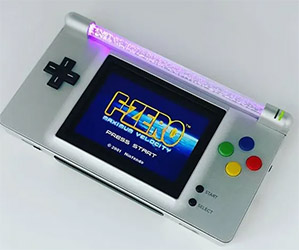  My Own Stash! My Own Stash!  I write a lot about my games and console collection on my Tumblr, BlastoiseMonster. Though it's true that I've been more active in the past, it's still a huge collection of ramblings, reviews, retrospectives and guides mainly about the world of Game Boy gaming, but also 90s vidya in general. Whenever I get a new addition, that's where it goes! I always try to do some research of the games I buy at conventions or online, even if I end up not playing them much due to language restrictions (I'm buying a lot of japanese exclusives lately) or personal tastes; I still love to talk about their production and how they came to be, especially if I find out they had an interesting development history. So yeah, if you like how I write, you can hop in on Tumblr for more x3 |
|
 SITELY
SITELY 